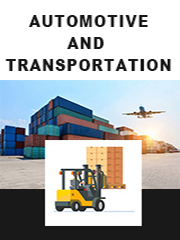The global Transportation Infrastructure market was valued at US$ million in 2022 and is projected to reach US$ million by 2029, at a CAGR of % during the forecast period. The influence of COVID-19 and the Russia-Ukraine War were considered while estimating market sizes.
Transport infrastructure refers to the foundation that supports the transport system. It includes roads, railways, ports, and airports. A transport system is a vital driver of social and economic development, which generates opportunities for both poor and facilitating economies to become competitive. Transportation infrastructure connects individuals to jobs, health services, and education on a daily basis. It facilitates the supply of goods and services globally.
This report aims to provide a comprehensive presentation of the global market for Transportation Infrastructure, with both quantitative and qualitative analysis, to help readers develop business/growth strategies, assess the market competitive situation, analyze their position in the current marketplace, and make informed business decisions regarding Transportation Infrastructure. This report contains market size and forecasts of Transportation Infrastructure in global, including the following market information:
- Global Transportation Infrastructure Market Revenue, 2018-2023, 2024-2032, ($ millions)
- Global top five companies in 2022 (%)
The key driver that supports the transportation infrastructure market raises the demand for transportation due to globalization. Transportation is one of the crucial sectors of any country's economy. It is involved in supporting the extensive movement of passengers and cargo within and outside its borders. Cargo transportation, such as raw materials, parts, and finished items, due to national & international trade has facilitated considerable diversity, affordability, and availability of goods in various countries.
MARKET MONITOR GLOBAL, INC (MMG) has surveyed the Transportation Infrastructure companies, and industry experts on this industry, involving the revenue, demand, product type, recent developments and plans, industry trends, drivers, challenges, obstacles, and potential risks.
Total Market by Segment:
Global Transportation Infrastructure Market, by Type, 2018-2023, 2024-2032 ($ millions)
Global Transportation Infrastructure Market Segment Percentages, by Type, 2022 (%)
- Railway
- Urban Mass Transport
- Airports
- Roads & Bridges
- Ports
Global Transportation Infrastructure Market, by Application, 2018-2023, 2024-2032 ($ millions)
Global Transportation Infrastructure Market Segment Percentages, by Application, 2022 (%)
Global Transportation Infrastructure Market, By Region and Country, 2018-2023, 2024-2032 ($ Millions)
Global Transportation Infrastructure Market Segment Percentages, By Region and Country, 2022 (%)
- North America (United States, Canada, Mexico)
- Europe (Germany, France, United Kingdom, Italy, Spain, Rest of Europe)
- Asia-Pacific (China, India, Japan, South Korea, Australia, Rest of APAC)
- The Middle East and Africa (Middle East, Africa)
- South and Central America (Brazil, Argentina, Rest of SCA)
Competitor Analysis
The report also provides analysis of leading market participants including:
- Key companies Transportation Infrastructure revenues in global market, 2018-2023 (estimated), ($ millions)
- Key companies Transportation Infrastructure revenues share in global market, 2022 (%)
Further, the report presents profiles of competitors in the market, key players include:
- Bechtel
- ACS Group
- Globalvia Inversiones (GVI)
- VINCI
- Alstom
- Royal Bam Group
- CGCOC Group
- Samsung Engineering
- China Railway Construction
- POSCO Engineering & Construction
- Power Construction Corporation of China
- Anhui Construction Engineering Group
- Zhejiang Construction Investment Group
- Zhingding International Engineering
Outline of Major Chapters:
Chapter 1: Introduces the definition of Transportation Infrastructure, market overview.
Chapter 2: Global Transportation Infrastructure market size in revenue.
Chapter 3: Detailed analysis of Transportation Infrastructure company competitive landscape, revenue and market share, latest development plan, merger, and acquisition information, etc.
Chapter 4: Provides the analysis of various market segments by type, covering the market size and development potential of each market segment, to help readers find the blue ocean market in different market segments.
Chapter 5: Provides the analysis of various market segments by application, covering the market size and development potential of each market segment, to help readers find the blue ocean market in different downstream markets.
Chapter 6: Sales of Transportation Infrastructure in regional level and country level. It provides a quantitative analysis of the market size and development potential of each region and its main countries and introduces the market development, future development prospects, market space of each country in the world.
Chapter 7: Provides profiles of key players, introducing the basic situation of the main companies in the market in detail, including product sales, revenue, price, gross margin, product introduction, recent development, etc.
Chapter 8: The main points and conclusions of the report.
